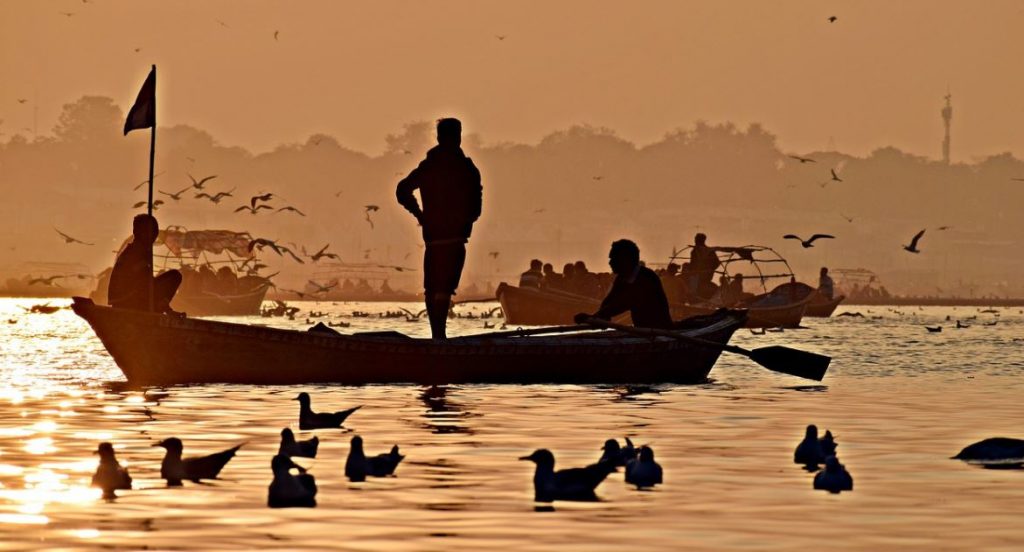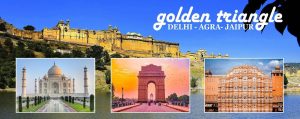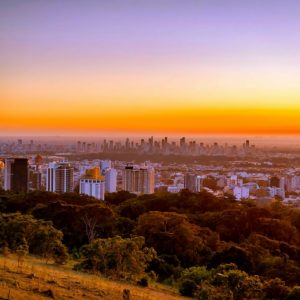Ujjain and Nashik the cities of Kumbh

Traveling around India it is practically impossible not to come into contact with some kind of religious practices. The most widespread religion in the country is Hinduism, 80% of India is Hindu, and we are talking about a billion people.
Everything moves and flows according to a spiritual law that connects the hearts of every believer, this philosophy of life creates a unique atmosphere. It is said that in this great country everything is considered sacred and words cannot express the feelings one feels in visiting it.
What you will find in the article
• The primordial energy of India
• The cities of the Kumbh Mela
• Rituals
• Ujjain
• What to do in Ujjain
• Nashik
• What to do in Nashik
Incredible India
India is a magical land, everything is enveloped in subtle and indefinite energy, it can be recognized in the eyes of the people, it lives and flows in the air, caresses the skin, and enters the body like a thrill of joy that comes from distant, unknown and at the same time familiar.
While we are on our tour in India visiting several cities and experiencing their diversities, our passion for India is great, and every time we visit India, it upsets us in the body and in the senses, it destabilizes our security and at the same time it reassures us, then how you get distracted it cares and disappoints you, makes you angry and after one second you love her as you’ve never loved any other place in the world. It makes you hate the human race with all of yourself and a moment later you meet the most loving human being in the world. India is indescribable in the true sense of the word, for better or for worse it is a place without equality.
The cities of the Kumbh Mela
After visiting Allahabad a few years ago and lately Haridwar, we felt the need to close the circle and also get to know Ujjain and Nashik. In these four sacred cities, the Kumbh Mela is celebrated, the largest religious gathering in the world. Millions of Hindus participate in the Kumbh Mela, the next one will take place in Haridwar in April 2021.
Rituals
In these sacred cities, everything is punctuated by religious rites addressed to the gods. The rituals are carried out in temples, in Ghats (stairways), at home, or on the street. Of course, a puja (prayer) that is celebrated at home is less complex than the ritual performed inside the Temple. In a self-respecting puja (ceremony), certain procedures and aspects will never be lacking. Everything revolves around the deities, their symbolism, and their invocation, mantras, japa and bhajan (prayers in verse, repetitions, and chants), the four elements, water, air, earth and fire, offerings, incense, candles, flowers, turmeric, sandalwood, fruit, honey, ghee, milk, and yogurt.
Aarti rite of fire
A very important rite is that of aarti (fire ritual) takes place at sunset to pay homage to the divinity, the camphor flames are made to twirl in the air.
City of pilgrimages
Visiting Ujjain and Nashik could be compared to the visit that Christians make to Assisi or Fatima, it is also true that India is difficult to compare with anything. In these cities, we met a few Western tourists and many Indian pilgrims, huge groups of families of the faithful. Inside the temples, endless lines for darshan (eye contact with the image of the divinity). Inside, offerings, blessings, prayers, meditations, devotional songs, donations of flowers, and prasad (offering of blessed food) are made.
Ujjain
As is often the case in India, in the morning before the sun rises, the cities are gloomy and what stands out in the eyes is the poverty and the filth. Ujjain is no exception but just get to the temple area and everything turns into a mix of colors, people, animals, and stalls. Ujjain has a population of about 500,000 inhabitants, in this city, it seems that modernity has never arrived, very few people speak English, and a Westerner walking down the street is seen as an alien, in restaurants you only eat local and strictly vegetarian cuisine, in general, the atmosphere is very exotic.
What to do in Ujjain
Mahakaleshwar Mandir – Temple dedicated to Shiva, it is not beautiful but certainly suggestive, inside is kept one of the 12 Jyotirlingas of India that have naturally created themselves, it is believed that they are full of shakti (creative energy). The Lingam (symbol of Shiva) represents the regenerative aspect of the material universe. Once you enter the temple there is a very long queue, through corridors, ramps and different environments, when you arrive in the lingam room, it seems to enter a vortex, people, flowers, offerings of all kinds, songs, mantras, and the tolling of bells, you are tossed to and fro without control, somehow, in the end, you come out shocked without understanding the lived experience. Not to be missed.
Harsiddhi Mandir
A very ancient temple, inside there are the symbols of the feminine Trimurti that is the three aspects of the Divine Mother: the goddess Kali (aggressive and severe), the goddess Lakshmi (wise and loving), and the goddess Saraswati (purity and knowledge). Furthermore, legend has it that some parts of the body of Sati, Shiva’s wife, have fallen into this place. The best time to visit is at sunset when the fire ritual takes place, large towers adorned with lamps are lit while devotees repeat the mantra Jai Mata Di (invocation to the Divine Mother). An enchanting and hypnotic show.
The ghats
Sunrise and sunset are the best times to visit the ghats, the inhabitants of the city, and pilgrims gather along the banks of the sacred Shipra River to pray and perform ablutions. The Ram ghat is where ceremonies, flower offerings, songs, mantras, and the inevitable Aarti fire ritual take place at sunset.
Siddha Ashram
Located on the banks of the river and built around the tree where the Guru lived for 12 years. Today in the ashram in addition to the temple, there is room to meditate, accommodation to sleep, and a kitchen area to eat, the place is very quiet and peaceful, very popular with Indians and many Westerners, we stayed there for a few days.
The surroundings of the city
Shri peer Matsyendra Nath – Samadhi (union with the absolute) of Matsyendranatha. Its name is known to yoga practitioners, Matsyendra-Asana is a Hatha-yoga posture related to its name. It seems that this sage really existed and that Goraksha’s teacher was one of the founders of Hatha-yoga. In Indian tradition, history and legend often merge and one of the many legends tells that:
Shiva during his yoga practice by the sea he noticed a fish watching him, Shiva understood that the fish by dint of looking at him, had obtained the knowledge of yoga, the God sprinkling water on the fish transformed it into Matsyendra, literally Matsya = fish and Indra = lord, Matsyendra the lord of fish. The place is located along the river bank and is surrounded by nature, a peaceful and energetic place to spend some time and meditate. Bhartrihari Caves – Not far from Matsyendra’s samadhi are caves where ascetics meditate.
Nashik
After Ujjain, we headed to the bigger and more chaotic Nashik. Located in the Maharashtra region, the same region as the cities of Mumbai and Pune. Nashik is increasingly turning into an economic and trade center. Like all the other cities of the Kumbh Mela, here too there is a flowing river and its waters are considered sacred. The old city and dotted with temples, the river with its ghats is the meeting point where pilgrims go to pray and to bathe.
What to do in Nashik
Kala Rama Temple – It is the most important temple in the city, dating back to around 1770. Built with black stone, the temple is dedicated to the god Rama and the name is given by the black statue (kala) of Rama inside. Every day it is visited by many faithful, inside there are statues of Sita, consort of Rama and, of Lakshman, brother of Rama. It is said that the God Rama ordered Lakshman to cut off the nose of Ravana’s sister, from this episode the city took its name. Nashik = nose.
Ramkund
From the Rama Kala temple, a short descent leads to the Godavari River, the Ramkund is a basin of sacred waters surrounded by Ghats. All the pilgrims and the inhabitants of the city come to purify themselves in the waters of the river. At the same point, there is a chaotic market with many stalls selling everything, the place is very crowded. During our visit in addition to the religious rituals, we noticed that people use this place even just to take a bath and cool off from the sultry heat, while the faithful did their ablutions, the amused children jumped like the sea or the pool.
The new area of the city
Out of curiosity, we wanted to get to know the modern part of the city and at the same time, it was days that we were immersed in Indian culture and felt the need to find a different meal than usual. There is not much to say, expensive cars, young Indians dressed in Western clothes, and shopping malls. We are not lovers of fast food and normally we do not eat them but after so many weeks of eating spicy and spicy, we ate a nice Mac Menu.
Something atypical
In Indian sacred cities, it is often not allowed to eat meat and drink alcohol, but progress and innovation do not stop. The mild climate of Nashik and its excellent location have made this city the place where the best Indian wines are produced, we did not miss the opportunity to visit the Sula Vineyards winery.
India is a constant surprise
When we say that everything changes in an instant in India, it is really true. We had to leave Nashik in the evening and the hotel where we stayed overnight did not give us the opportunity to leave our backpacks. This was a big problem for us as we would have had to hang around all day with our bags. We told the hotel porter all sorts of things and we were really angry, but as if by magic we met Kale, a former sailor, and owner of a tiny cafe, our backpacks were bigger than his little bar but he with extreme sweetness helped us. Unfortunately, we don’t have his photo but he does the same.




